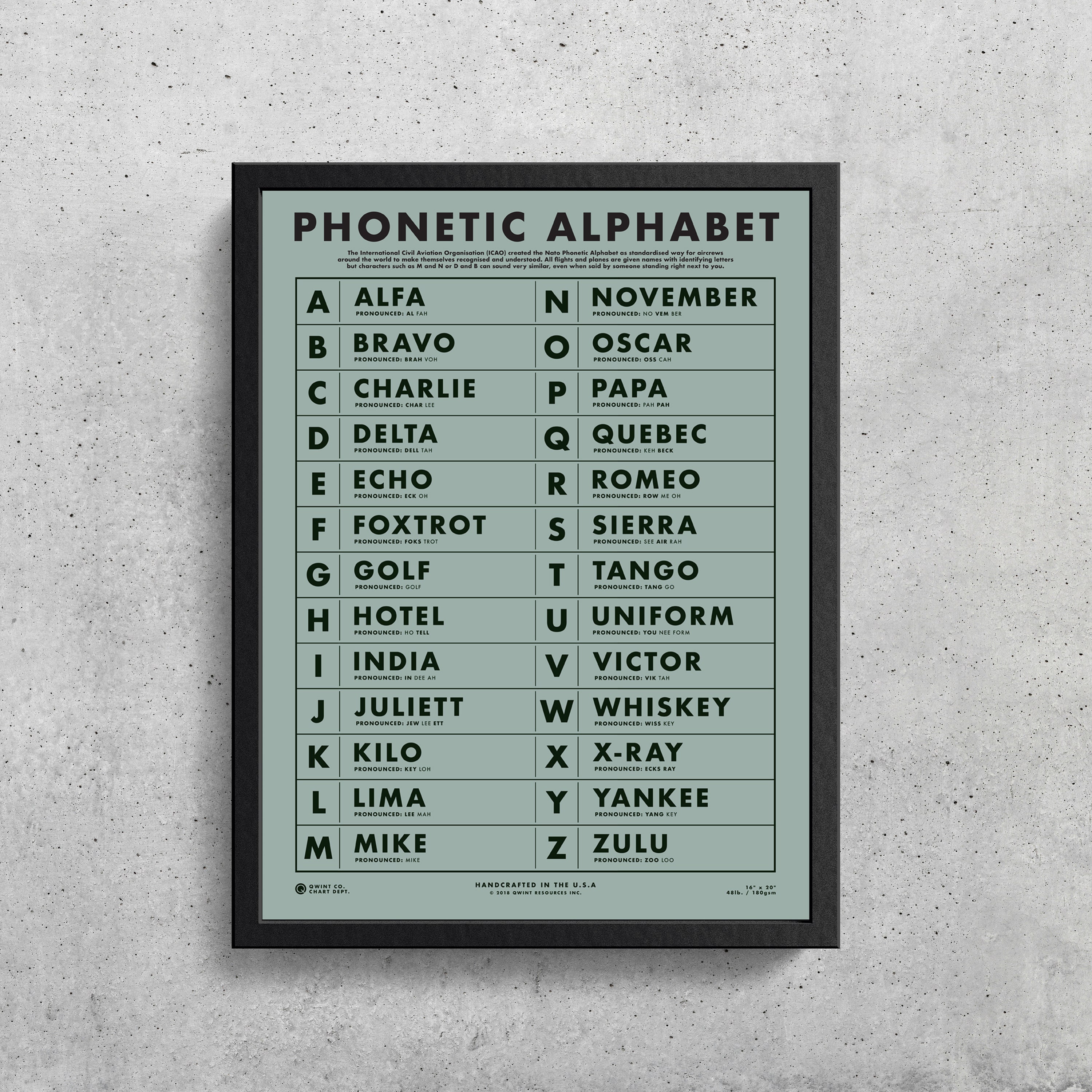

The code even crops up in time keeping, with Greenwich Mean Time, also known as Coordinated Universal Time (UTC), often being referred to as "Zulu Time". The airlines use the International Phonetic Alphabet when they communicate Passenger Name Records (PNRs), and medical workers are using the code to avoid mistakes in patient records.
PILOT SPELLING ALPHABET SERIAL NUMBERS
The NATO Phonetic Alphabet is also used by credit card companies, call centers, and retail workers when confirming a name on a credit card or stock codes, and the code is increasingly being used by information technology workers when communicating serial numbers or reference codes. Often, letters that sound similar, such as "M" and "N" and "F" and "S", are confused, and this can be critical when giving information to emergency responders. The code was designed to eliminate problems communicating when there is bad reception, a lot of background noise, or people who have strong accents. The code was officially established in 1956 by NATO and ICAO, and the words were chosen based on extensive testing with speakers from different countries. Often referred to as the ICAO/ITU/NATO Phonetic Alphabet, or the International Phonetic Alphabet, it is a set of words that are used instead of letters in oral communication, where each word represents its initial letter. The code is officially known as the North Atlantic Treaty Organization (NATO) Phonetic Alphabet, the International Radiotelephony Spelling Alphabet (IRSA), the International Civil Aviation Organization (ICAO) phonetic alphabet, and the International Telecommunication Union (ITU) phonetic alphabet. SEE ALSO: WHEN THE INTERNET AND CELL PHONE NETWORKS GO DOWN, AMATEUR RADIO OPERATORS STEP UP The ICAO/ITU/NATO Phonetic Alphabet federal government, where it is known as "Federal Standard 1037C: Glossary of Telecommunications Terms." The code has also been adopted by the International Maritime Organization (IMO), and the U.S. Pilots and air traffic controllers use the code. To change one word involves reconsideration of the whole alphabet to ensure that the change proposed to clear one confusion does not itself introduce others.The code has been adopted for use by the Federal Aviation Administration (FAA), the American National Standards Institute (ANSI), the American Radio Relay League (ARRL), the International Amateur Radio Union (IARU), and the Association of Public-Safety Communications Officials-International (APCO). One of the firmest conclusions reached was that it was not practical to make an isolated change to clear confusion between one pair of letters. It is known that has been prepared only after the most exhaustive tests on a scientific basis by several nations. Numbers are spoken as English digits, but with the pronunciations of three, four, five, nine, and thousand modified. "Alfa" and "Juliett" are intentionally spelled as such to avoid mispronunciation NATO would do the same with "Xray". The 26 code words are as follows (ICAO spellings): Alfa, Bravo, Charlie, Delta, Echo, Foxtrot, Golf, Hotel, India, Juliett, Kilo, Lima, Mike, November, Oscar, Papa, Quebec, Romeo, Sierra, Tango, Uniform, Victor, Whiskey, X-ray, Yankee, Zulu.

The words were chosen to be accessible to speakers of English, French and Spanish.Īlthough spelling alphabets are commonly called "phonetic alphabets", they should not be confused with phonetic transcription systems such as the International Phonetic Alphabet. In 1956, NATO modified the then-current set of code words used by the International Civil Aviation Organization (ICAO) this modification then became the international standard when it was accepted by ICAO that year and by the International Telecommunication Union (ITU) a few years later. The specific code words varied, as some seemingly distinct words were found to be ineffective in real-life conditions.

PILOT SPELLING ALPHABET SERIES
To create the code, a series of international agencies assigned 26 code words acrophonically to the letters of the Roman alphabet, with the intention of the letters and numbers being easily distinguishable from one another over radio and telephone, regardless of language barriers and connection quality. FAA radiotelephony alphabet and Morse code chart Problems playing this file? See media help.


 0 kommentar(er)
0 kommentar(er)
